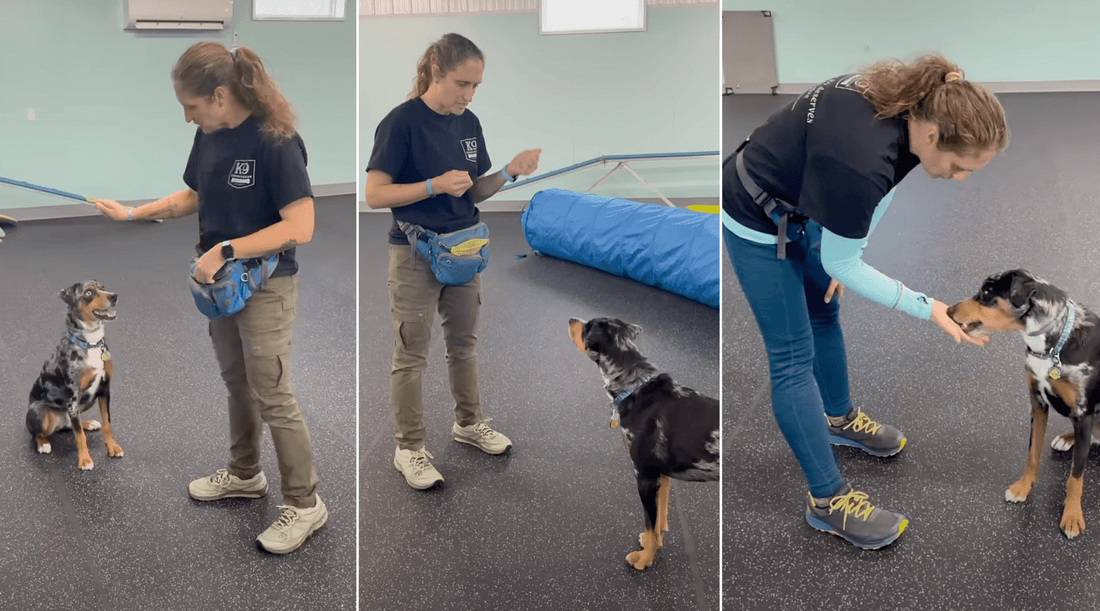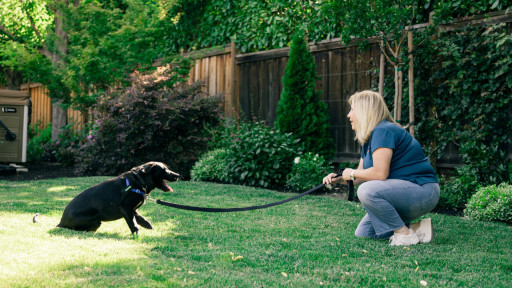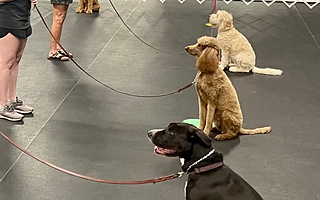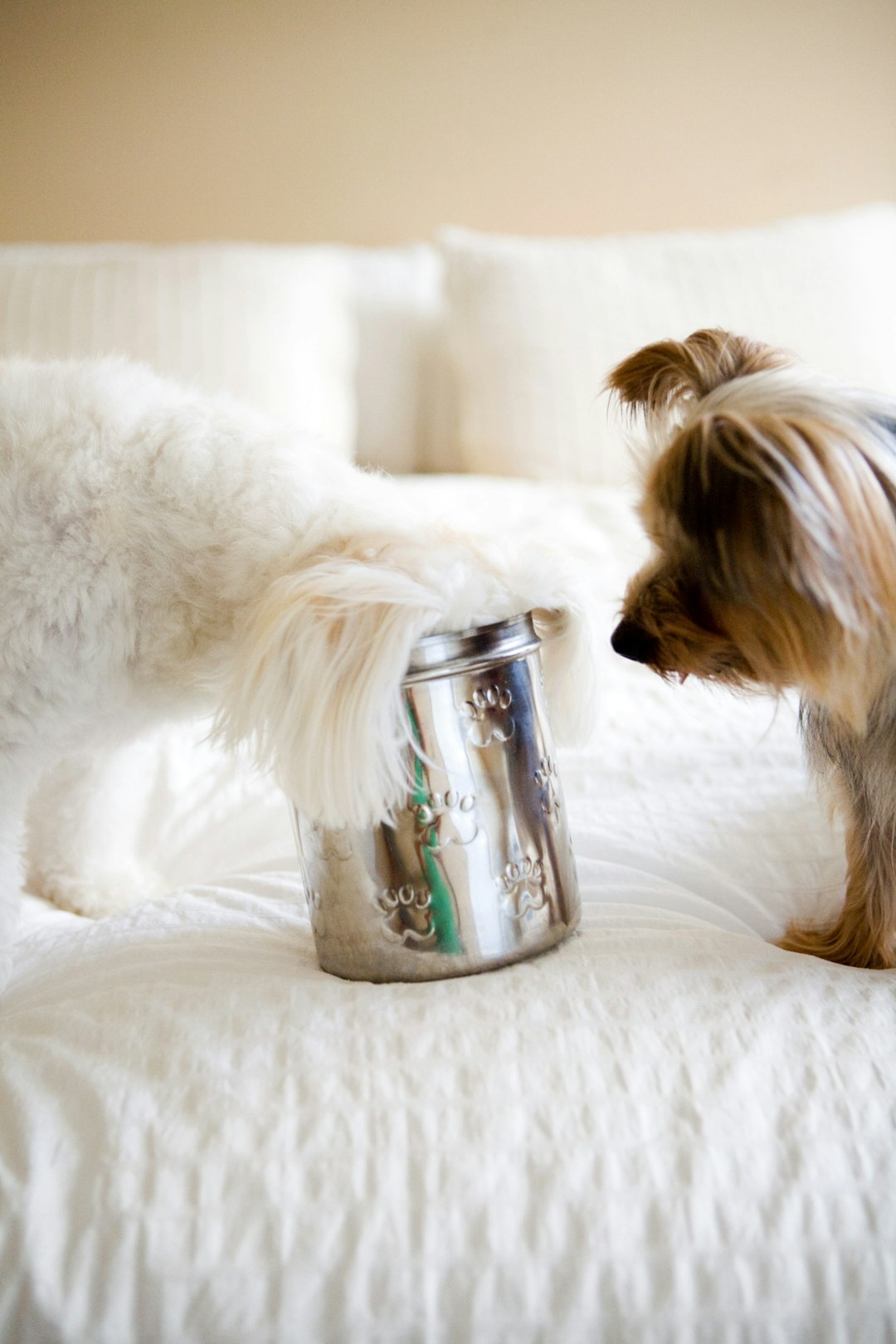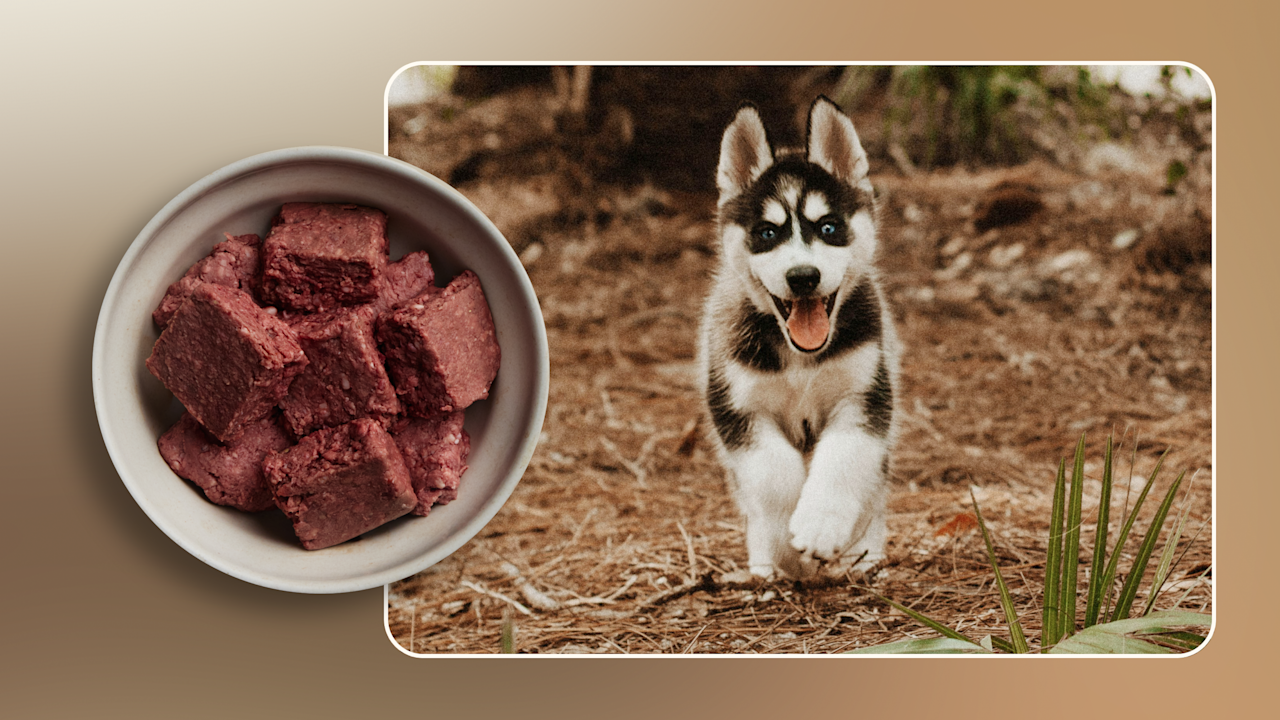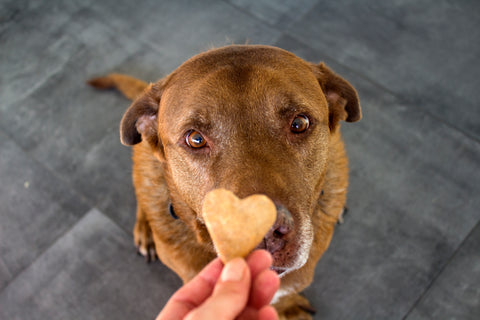Have you ever caught yourself wondering if your dog really needs snacks? You want to give your furry friend the best, but are treats helping or hurting?
Understanding whether dogs need snacks can change the way you care for your pet every day. Keep reading, because what you learn here could make your dog happier and healthier—without overfeeding or guilt. Let’s dive into the truth about dog snacking and what it means for your best friend.
Dog Snacking Basics

Credit: www.dogster.com
Benefits Of Dog Treats
Dog treats offer more than just a tasty bite for your furry friend. They serve several important roles in a dog’s daily life. Treats can encourage good behavior, strengthen your bond, and even support your pet’s health. Knowing these benefits helps you use treats wisely and positively in your dog’s routine.
Training Aid
Treats are powerful tools for training dogs. They motivate dogs to learn new commands and tricks quickly. Rewarding a dog immediately after a good action helps them understand what you want. Small, tasty treats keep your dog focused and eager to obey. This positive reinforcement makes training sessions fun and effective.
Bonding With Your Pet
Giving treats is a simple way to build trust with your dog. It shows care and attention, making your pet feel loved and secure. Sharing treats during playtime or quiet moments strengthens your emotional connection. This bond improves your dog’s behavior and happiness. Treat time becomes a special moment for both of you.
Nutritional Boost
Some dog treats provide essential nutrients like vitamins and minerals. These treats can complement your dog’s regular diet. Healthy treats support digestion, skin, and coat health. Look for treats made with natural ingredients and balanced nutrition. Treats should never replace a full meal but can add value to your pet’s diet.
Risks Of Over-snacking
Giving your dog snacks can be a great way to show love and reward good behavior. However, too many treats can lead to some serious problems. Understanding the risks of over-snacking helps you keep your furry friend healthy and happy.
Weight Gain
Snacks often contain extra calories that your dog doesn’t need. Just a few extra bites every day can add up quickly, pushing your dog toward unwanted weight gain.
Overweight dogs face health issues like joint pain, diabetes, and a shorter lifespan. Have you noticed your dog gaining weight despite regular exercise? Cutting back on treats might be the key.
Nutritional Imbalance
Snacks can upset the balance of your dog’s diet. If treats replace part of their regular meals, they might miss out on essential nutrients.
Some snacks are high in fat or sugar, which don’t provide the vitamins and minerals your dog needs. Think about the quality of the snacks you’re giving—are they adding value to your dog’s nutrition or just empty calories?
Behavioral Issues
Over-snacking can lead to bad habits like begging, jumping, or even food aggression. Your dog might start expecting treats constantly, which can be stressful for both of you.
Setting clear rules about when and how many snacks are allowed helps maintain good behavior. Have you found your dog becoming pushy around snack time? It might be time to rethink your treat routine.

Credit: www.finchleydogwalker.co.uk
Choosing Healthy Treats
Choosing healthy treats for dogs plays a key role in their overall health. Treats should support their nutrition without adding too many calories. Good treats can also help train dogs and show them love.
Healthy snacks provide energy and important nutrients. Avoid treats with artificial colors or flavors. Natural and simple ingredients help keep dogs strong and happy.
Natural Ingredients
Natural ingredients are easier for dogs to digest. Look for treats made from real meat, vegetables, or fruits. Avoid fillers, by-products, and chemicals. These can cause allergies or upset stomachs.
- Real chicken, beef, or fish
- Sweet potatoes and carrots
- Apples and blueberries (without seeds)
Natural treats also tend to taste better and smell fresher. They keep your dog excited for snack time without harmful additives.
Low-calorie Options
Low-calorie treats help prevent weight gain. Obesity can cause serious health problems in dogs. Choose small treats with fewer calories for daily rewards.
- Freeze-dried meat pieces
- Vegetable sticks like green beans
- Low-fat cheese bits
Use treats in moderation. Balance treats with your dog’s regular meals and exercise routine.
Special Dietary Needs
Some dogs need special treats due to allergies or health issues. Grain-free or hypoallergenic options suit sensitive dogs. Diabetic dogs need treats low in sugar.
- Consult your vet for the best choices
- Look for treats labeled for sensitive stomachs
- Choose limited-ingredient treats to reduce risk
Careful treat selection supports your dog’s unique health needs. It helps maintain their well-being and happiness.
Frequency Of Treating
How often you give your dog a treat matters more than you might think. Treat frequency affects their behavior, health, and even their excitement around you. Finding the right balance can keep your furry friend happy without overdoing it.
Routine Vs. Occasional
Some dogs get treats as part of their daily routine, especially during training sessions. This helps reinforce good behavior and keeps them motivated.
However, giving treats too often can lead to weight gain and reduce their interest in regular meals. On the other hand, occasional treats can make those moments special and highly rewarding.
Ask yourself: Are you using treats to reward specific actions or just handing them out? Sticking to a purpose makes treats more meaningful and effective.
Age-appropriate Snacking
Puppies need frequent, small treats to support their rapid growth and frequent training. But these treats should be gentle on their developing digestive systems and low in calories.
Adult dogs can handle less frequent treats, focusing more on quality than quantity. Older dogs often benefit from treats designed for joint health or dental care.
Consider your dog’s age and health before deciding how often and what kind of treats to give. Tailoring treat frequency keeps them healthy and happy throughout their life stages.
Homemade Dog Treats
Making homemade dog treats can be a rewarding way to show love to your furry friend. You control exactly what goes into their snacks, ensuring they are both tasty and healthy. Plus, your dog gets excited every time you bring out a special treat made just for them.
Simple Recipes
Simple homemade treats often require just a few ingredients you already have at home. Try mixing peanut butter, oats, and mashed banana to create chewy bites your dog will enjoy. Baking them for about 15 minutes at a moderate temperature is usually enough to get the right texture.
Another easy option is using cooked sweet potato slices as a natural, nutrient-rich treat. These can be dehydrated or lightly baked until slightly crisp. Have you noticed how your dog reacts to natural flavors compared to store-bought snacks?
Avoiding Harmful Ingredients
Many commercial dog treats contain additives that might harm your pet over time. Avoid ingredients like chocolate, grapes, raisins, onions, garlic, and artificial sweeteners such as xylitol. These can be toxic and cause serious health issues.
When you make treats at home, you can leave out salt and sugar, which are often added unnecessarily. Instead, focus on whole foods that support your dog’s health. Always double-check ingredient lists and consult your vet if you’re unsure about something you want to add.
Signs Of Healthy Treating
Knowing the signs of healthy treating helps you give your dog snacks without harming their health. Treats should support your dog’s overall well-being and not cause problems like weight gain or dull fur. Watching how your dog responds to treats lets you adjust their snack time for the best results.
Maintaining Weight
Healthy treats don’t add extra pounds. Keep an eye on your dog’s weight regularly. If you notice any unexpected gain, it may be time to cut back on treats or choose lower-calorie options.
Your dog’s body should stay in balance. If treats become a major part of their daily calories, weight issues can arise. Are you tracking your dog’s weight as closely as you do their meals?
Energy Levels
Treats should help maintain steady energy throughout the day. If your dog seems sluggish or overly hyper after snacks, it might mean the treats aren’t the right fit. Energy crashes or spikes can be a sign to rethink your treat choices.
I once noticed my dog getting tired right after treats. Switching to a healthier snack made a big difference. What does your dog’s energy tell you about their treats?
Coat Condition
Look at your dog’s coat for clues on how snacks affect their health. A shiny, soft coat often means their diet, including treats, is balanced and nourishing. Dry, dull, or patchy fur can signal nutrient problems, possibly linked to unhealthy treats.
Regular grooming combined with mindful treat choices can improve coat quality. Have you ever connected your dog’s fur health to the treats you give?

Credit: www.dogster.com
Snacking Alternatives
Dogs enjoy treats, but snacking does not have to mean extra calories. There are many ways to keep dogs happy without overfeeding. Snacking alternatives help maintain your dog’s health and mental sharpness. These options also strengthen the bond between you and your pet.
Interactive Toys
Interactive toys are a great way to engage dogs. These toys challenge their minds and keep them busy. Puzzle feeders make dogs work for their food. This slows down eating and provides mental exercise. Toys that dispense treats reward effort and curiosity. These activities reduce boredom and destructive behavior. Interactive toys are perfect for indoor play and training.
Playtime Rewards
Playtime rewards use fun instead of food. Dogs respond well to games like fetch and tug-of-war. These activities provide exercise and mental stimulation. Praise and petting can also serve as rewards. Use toys or a favorite game after good behavior. This encourages learning and strengthens your relationship. Playtime rewards keep dogs active and happy without extra snacks.
Frequently Asked Questions
Do Dogs Really Need Snacks Between Meals?
Dogs do not require snacks if they get a balanced diet. Snacks can supplement nutrition or serve as training rewards. Use healthy, portion-controlled treats to avoid overfeeding and weight gain. Always choose snacks that suit your dog’s dietary needs and lifestyle.
What Are The Best Healthy Snacks For Dogs?
Healthy dog snacks include small pieces of cooked meat, vegetables like carrots, and commercial treats with natural ingredients. Avoid snacks high in sugar, salt, or artificial additives. Always check ingredient lists and consult your vet for the best options for your dog.
How Often Should I Give My Dog Snacks Daily?
Limit dog snacks to 10% or less of their daily calorie intake. Giving snacks once or twice a day is usually sufficient. Over-snacking can lead to obesity and nutritional imbalance. Monitor your dog’s weight and adjust snack frequency accordingly.
Can Snacks Improve My Dog’s Training Results?
Yes, snacks are effective positive reinforcement during training. Small, tasty treats motivate dogs to learn commands and behaviors. Use snacks sparingly to maintain their impact. Always reward immediately after the desired action for best results.
Conclusion
Dogs enjoy snacks, but they do not always need them. Snacks can help with training and bonding. Choose healthy treats and give them in small amounts. Too many snacks can cause weight gain and health issues. Pay attention to your dog’s diet and energy needs.
Dogs enjoy treats just like people do. Snacking can be a part of their daily routine. It helps with training and shows love. But snacks should not replace healthy meals. Snacks need to be safe and healthy for dogs.
Choosing the right snacks is important. Some foods can be harmful. Snacks should add nutrition, not harm health. Portion control matters to avoid weight gain. Understanding dog snacking basics helps keep pets happy and healthy.
What Counts As A Dog Snack?
A dog snack can be any small food given between meals. Common examples include:
- Commercial dog treats
- Small pieces of cooked meat
- Vegetables like carrots or green beans
- Special dental chews
Not all human foods are safe. Avoid chocolate, grapes, onions, and anything toxic.
How Often Should Dogs Snack?
Snacking frequency depends on the dog’s size, age, and health. Usually, one or two small snacks per day are enough. Over-snacking can cause weight problems. Use snacks mainly for training rewards or special treats.
Benefits Of Healthy Dog Snacks
Proper snacks can improve health and behavior. Benefits include:
- Supports training and learning
- Helps maintain dental health
- Provides extra nutrients
- Strengthens the bond with your dog
Risks Of Overfeeding Snacks
Too many snacks can lead to problems such as:
- Obesity and related diseases
- Digestive upset
- Behavioral issues like begging
- Imbalance in nutrition
Always ask your vet if unsure about treats. Snacks should never replace regular meals. Treats add fun but keep balance in mind. Your dog’s happiness comes from care and love.

